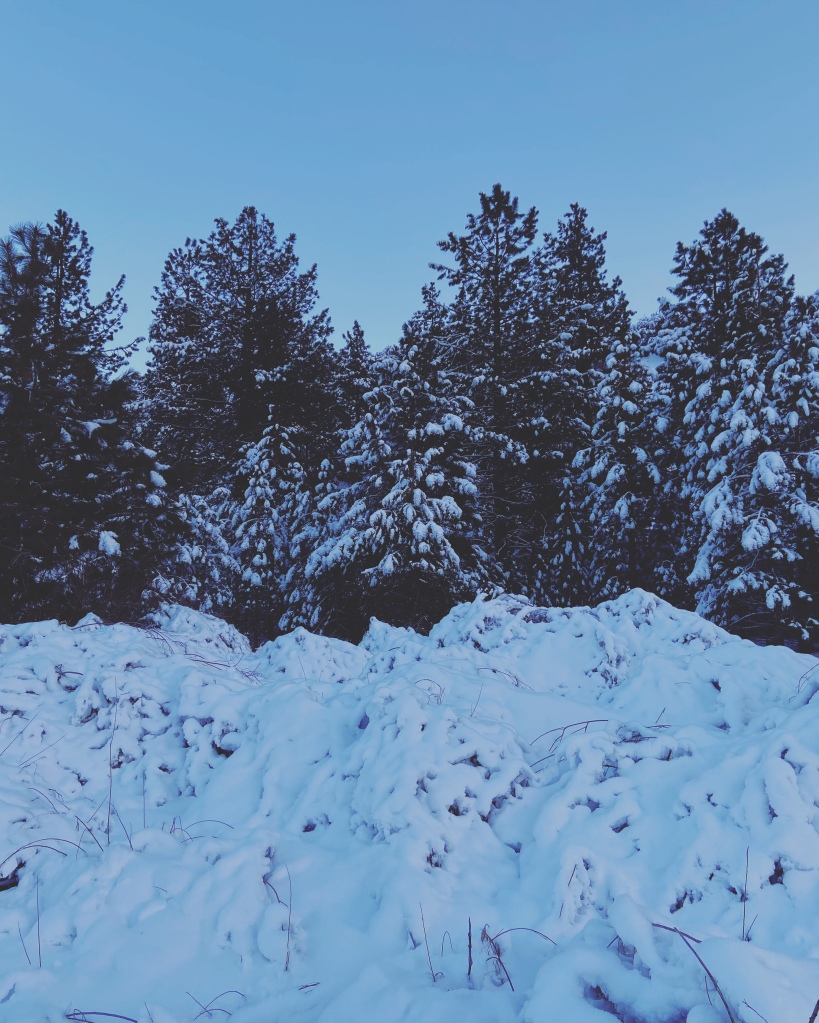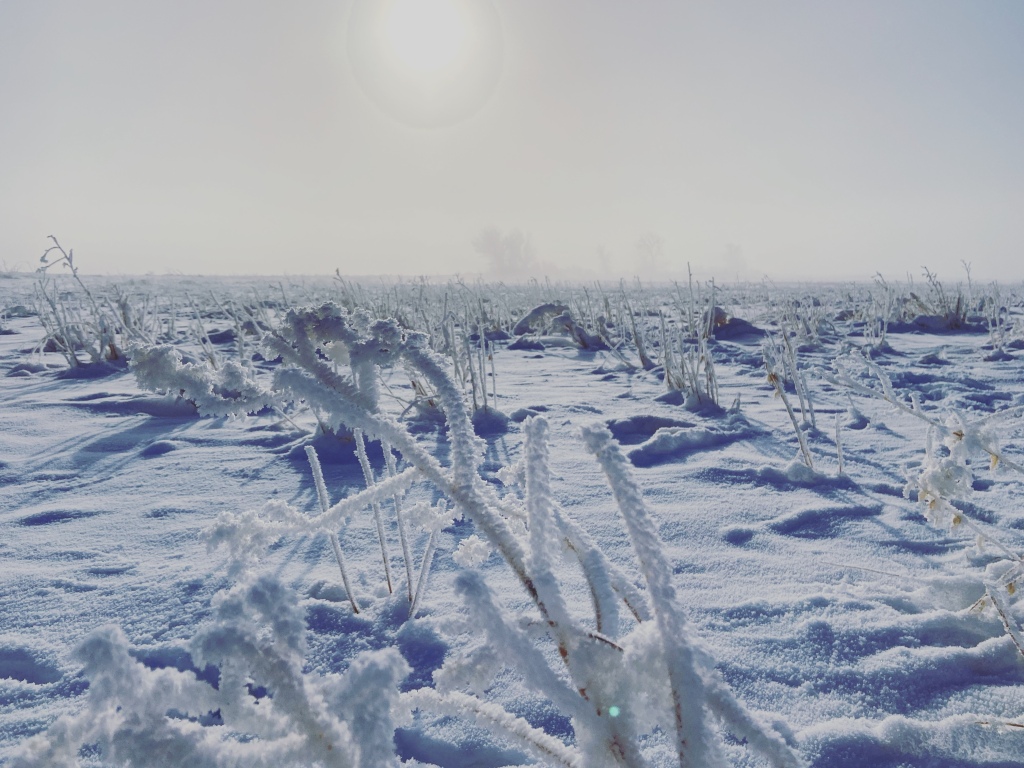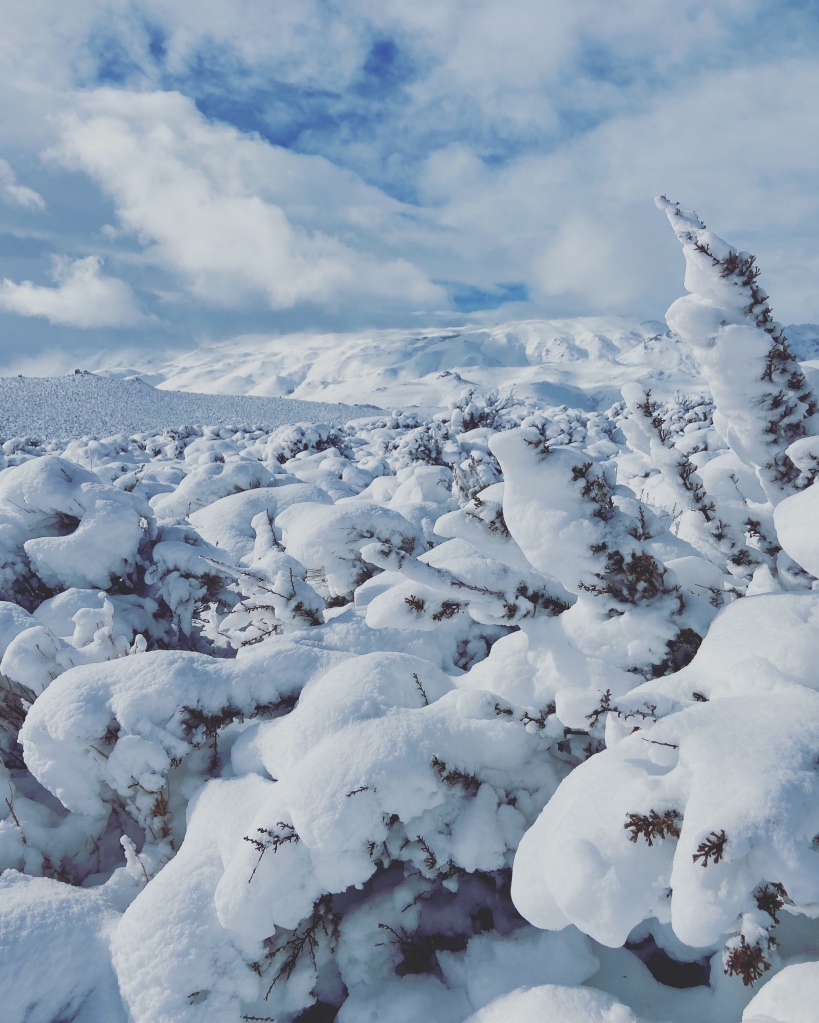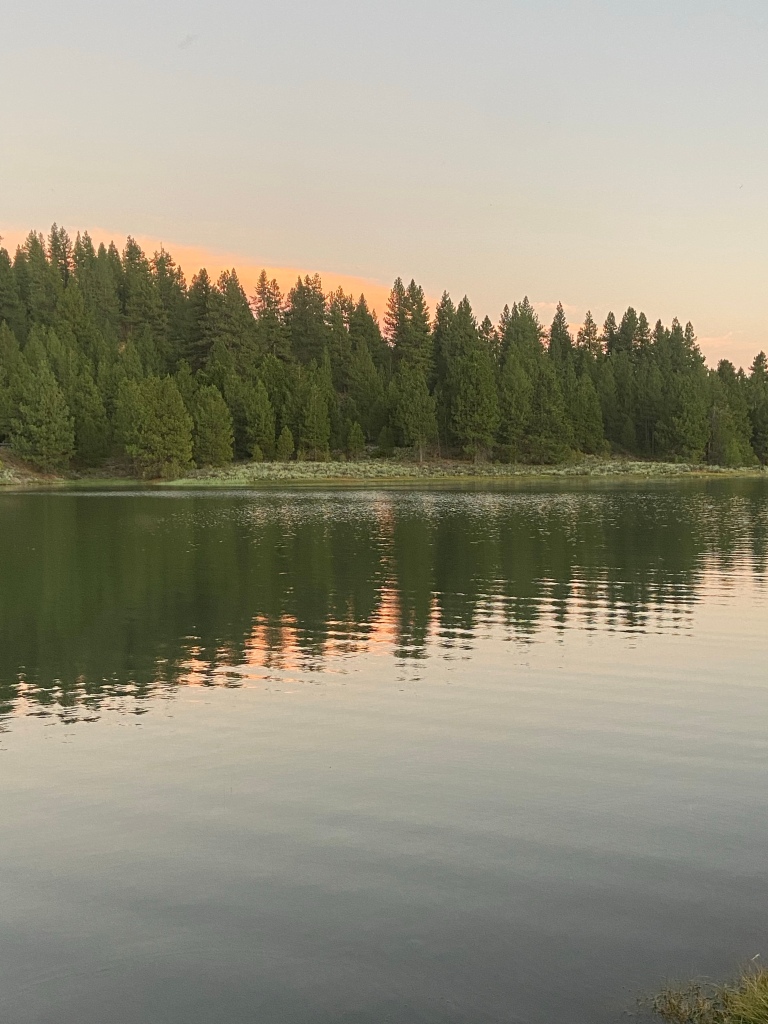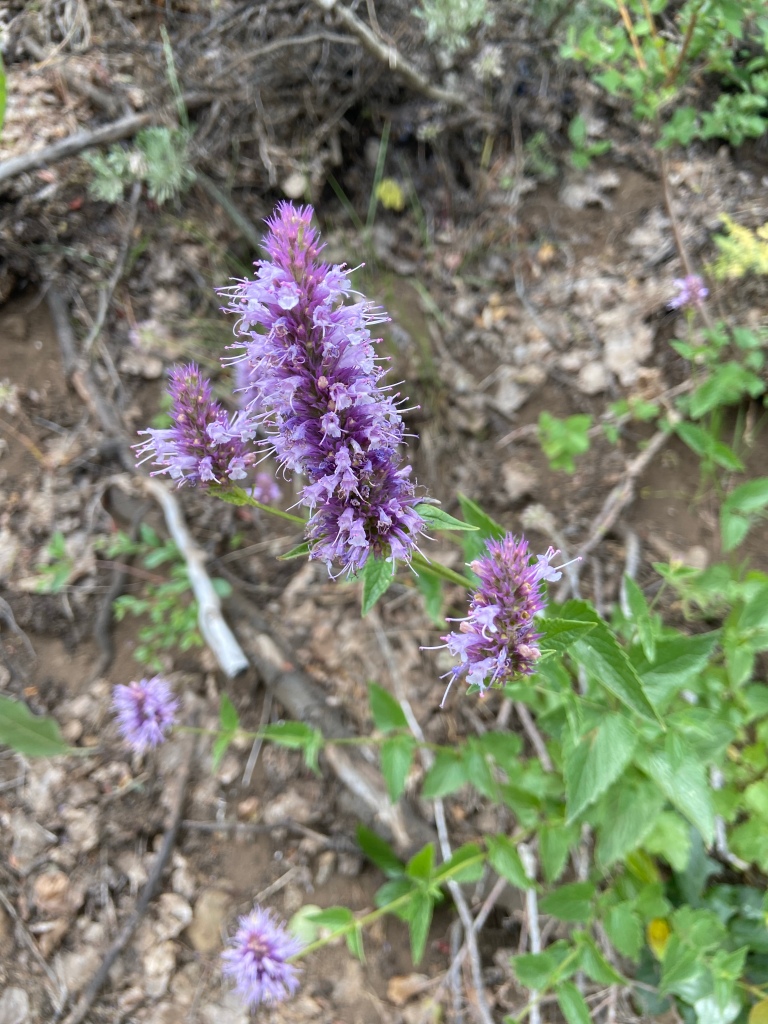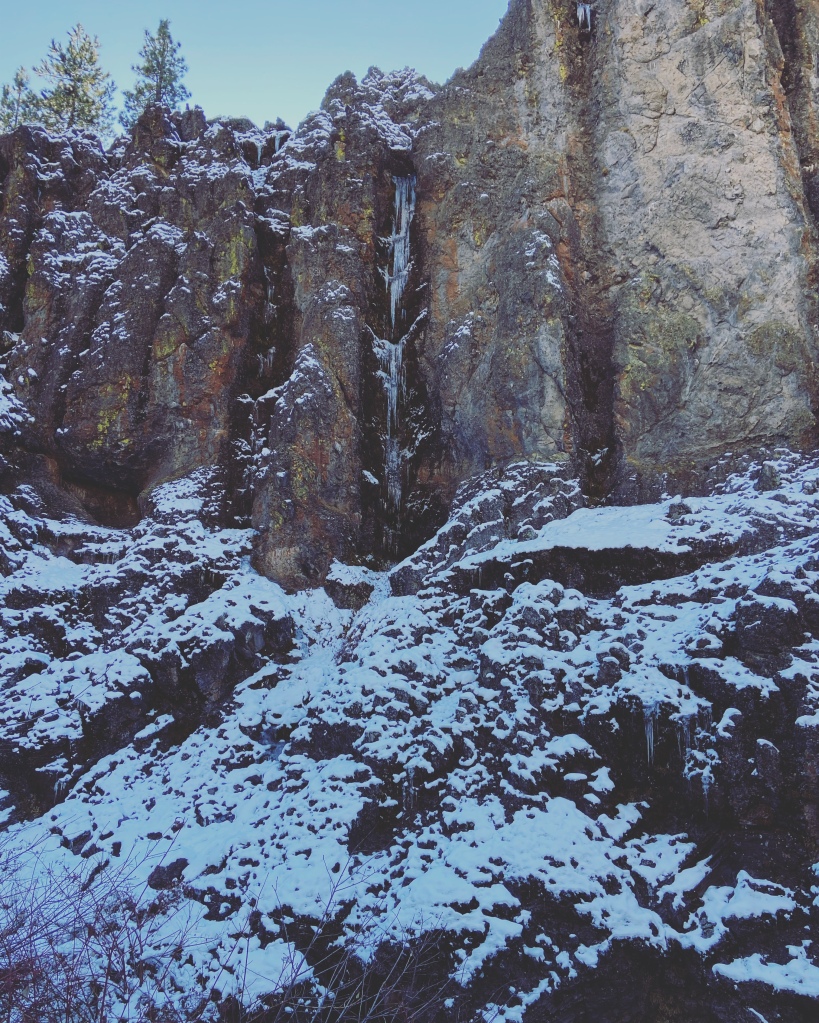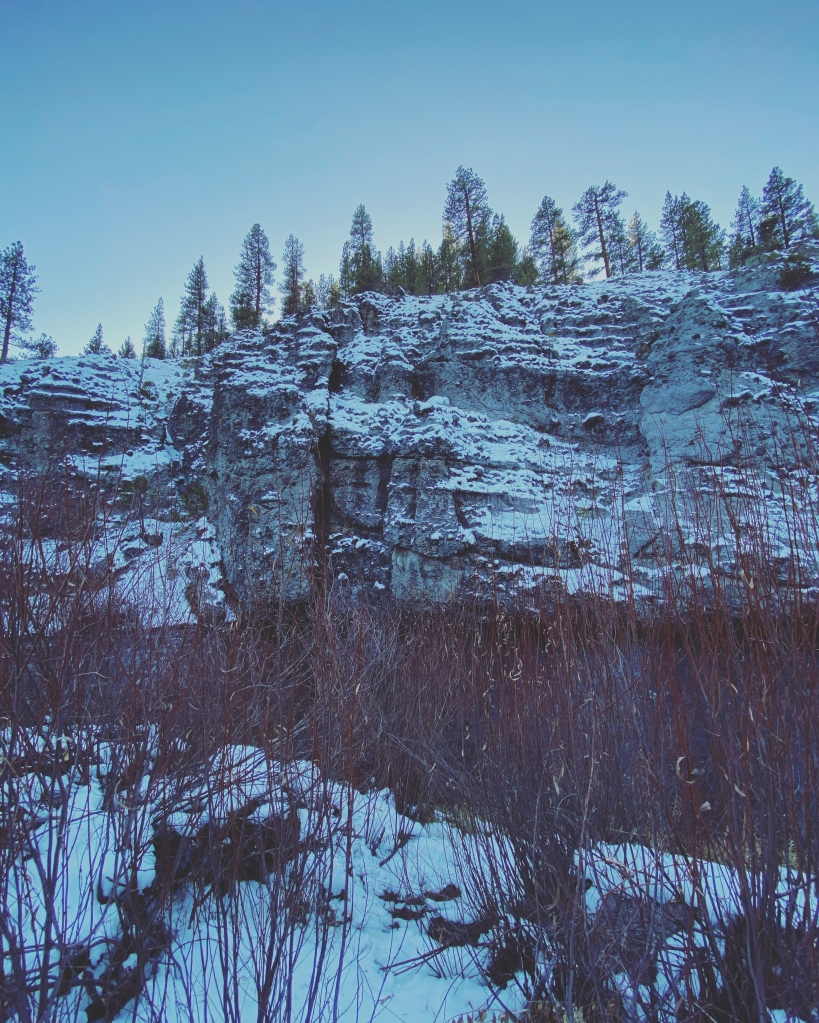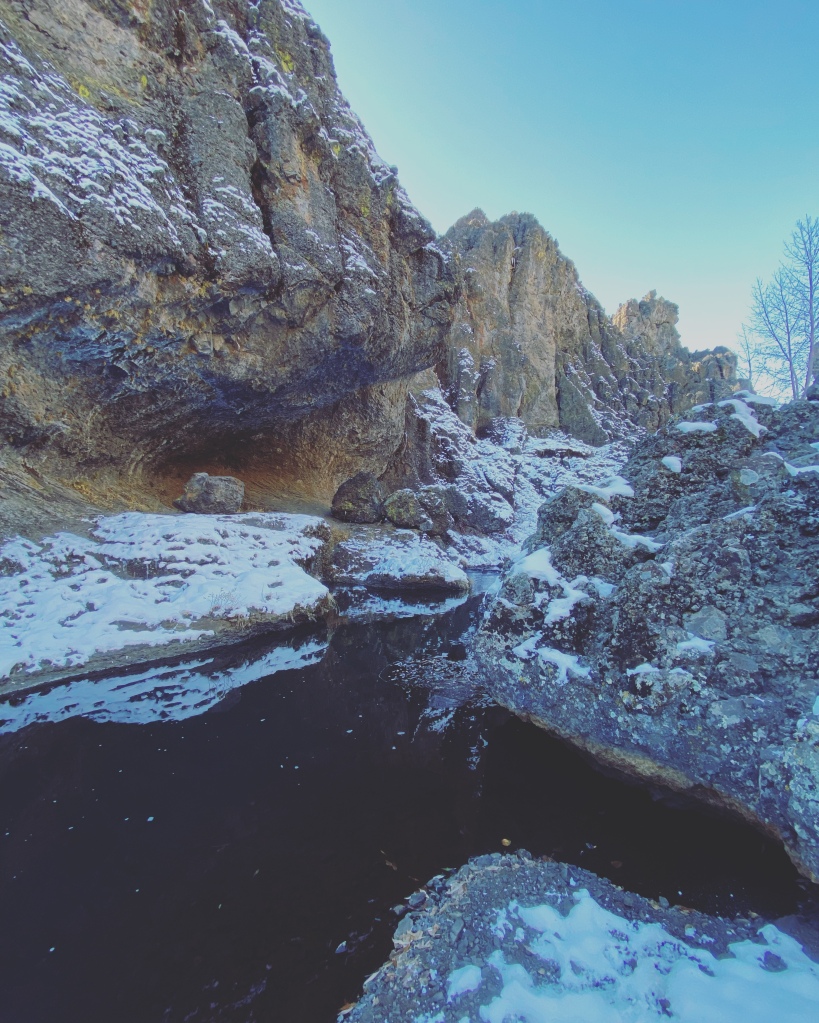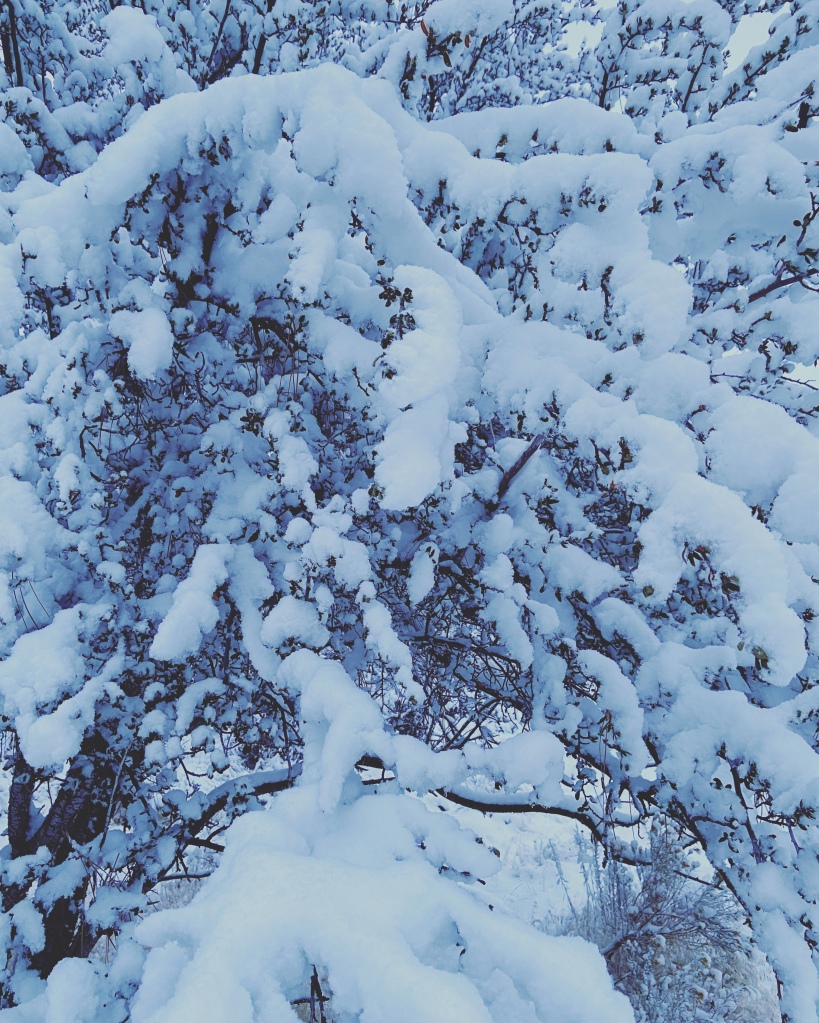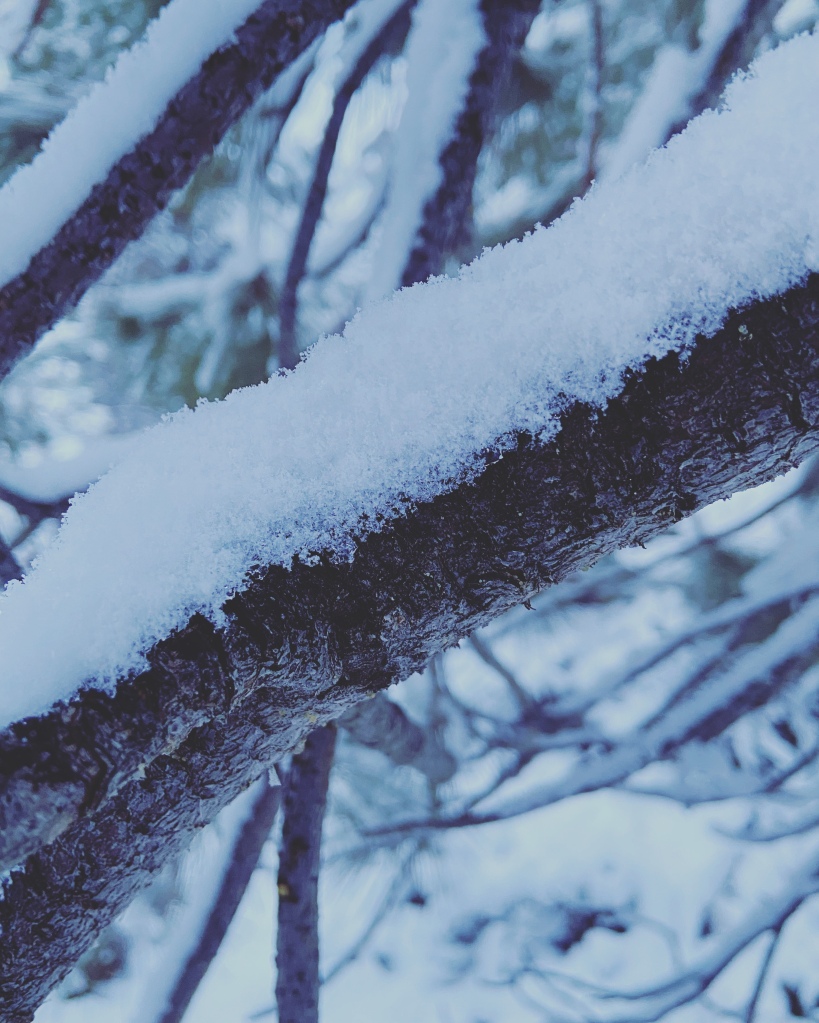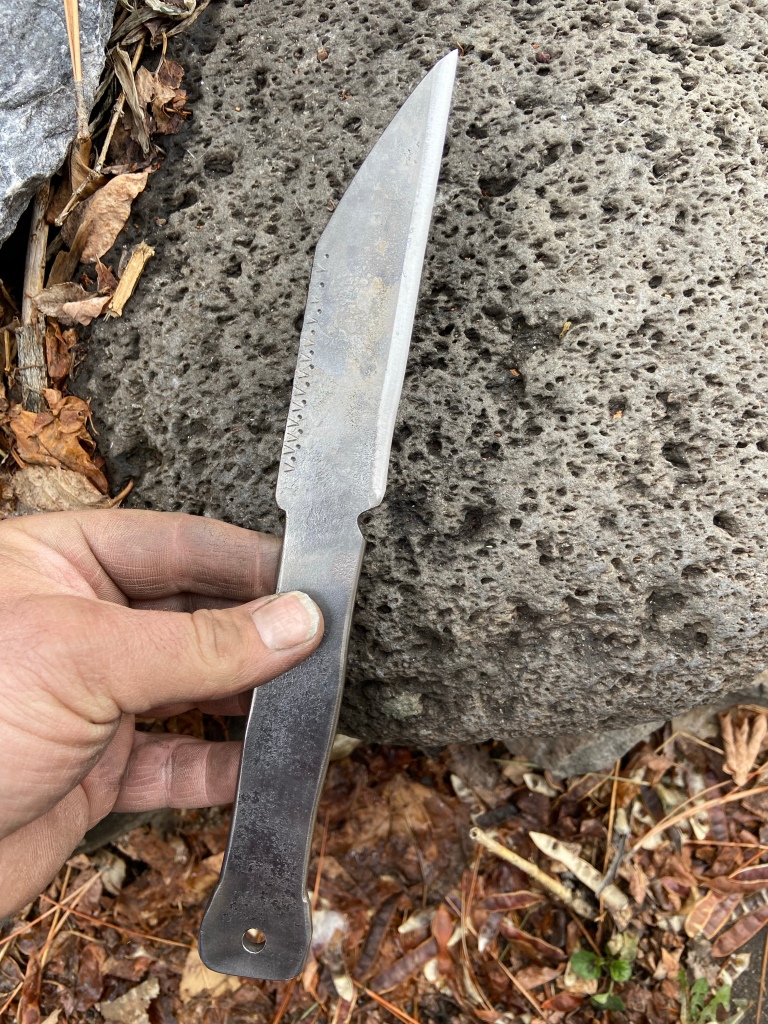Celts and Germans (Random thoughts and myth comparison)

Germans, Celts, Manus, Teutates-Toutatis, Tuisto Etc.
The Celtic God Teutates is described by Roman writers as a Celtic God of War, associated or compared with both Murcury (Woden) and Mars (Tiw). It is said he was one of 3 major Gods worshiped by the Celts in Gaul and Britain (Taranis = Thor)
Esus (Ing) and Teutates (Tiew/Woden). In Tacutus’s Germania he describes the first information of Germanic tribes to be recorded: That they worship an Earth Born God called “Tuisto” or Tuisco* (*cognate to Tiw) earlier reportedly meaning “Two” or “double” and the later being possibly cognate to Tiw. Is Teutatis and Tiw (Tiwaz) somehow related? Is Tuisto in fact Teutatis and the name sake of the Tribes of which the Germans take their name (Deutsch).
Are Teutates, Taranis and Esu cognate to Woden þunor and Ing.
War, Thunder and Lord.
Celtic Sea God Manannán cognate to Germanic Manus? Manannan is described as a Tuatha Da Danan (People of Danu) a tribe of divine beings that inhabited Britain before the humans arrived. The Milesians (Celts or Scythians) then inhabited the Islands. Are the Tuatha Da Danan a reference to a Teutonic people previously inhabiting Britain? According to the Book Blood of the Isles (which did DNA surveys on Britain) found that Scotland particularly had a surprisingly high migration rate from Scandinavia during the Beaker and later bronze age.
The God Manannan has interesting comparisons to Ing or Freyr:
One:
Freyr is son of Njorð a Sea/Fertility God.
Manannan is son of Ler a Sea God
Two:
Freyr has a magic boat that fits in his pocket.
Manannan has a magic boat that guides itself.
Three:
Freyr has a magic sword which fights on its own.
Manannan has a magic Sword that steals his enemies strength.
Four:
Freyr has a magic boar he rides and is associated with horses/horse cults.
Manannan has a magic horse who rides over sea and land (Also Sleipnir like)
Both Celtic and Germanic myth describe a primordial Race of Giants being in conflict with the Gods of order. Greek myth which is also Indo European has Titans as the primordial beginning. The Germans have Ettins/Jotuns or Eotens and the Celts have
Formorians.
The Tuatha Da Danan Battled the Formorians in Celtic myth as the Vanir Battle the Æsir in Norse or Germanic although Vanir does not exist outside later Norse sources. It is unknown if the Eldest kindred of Teutons (Germans) acknowledged a difference between Gods or saw them as having tribes. Perhaps it was simply a matter of Æsir and Jotuns as the Vanir are descended from Jotuns technically. Elements of Celtic mythology appear to almost reference the settling of the Indo-Europeans across Europe and even place the Tuatha Da Danan as the northern most of these groups. (Later they are the Pagan Irish Gods).
Were the Formorians and Fir Bolg Hunter Gatheres and Neolithic Farmers?
While the Earliest Teutons share a vague Celtic attachment none are more vague than the Belgae:
The Belgae are both linked to the Cimbri and in their own words spring from the Germani a tribe who’s name later becomes a catch all for for all Germanic speaking people. Many of the Belgae names and descriptions say they are in fact Celts but signs of a true mixture of the two groups appears to be in sight. They are hostile to the Gauls but apparently can speak a form of Gaulish. The name Belgae has both Proto Celtic and Proto Germanic etymologies. It is said to mean swelling with anger or battle fury. Caesar states they are the most Brave and when he asked them of their deeds they stated that the Cimbri and Teutons failed to invade them. It is said later the Cimbri led partly to the Belgae as a people. There is inconsistency here.
The Belgae and Gauls are both said to wear winged or elaborate horned or crested helmets. The Celts wore Boar crested helmets as well did Germanic tribes. The Winged Helmet although the accuracy unknown was often attributed to the Teutonic tribes.
It should be noted the practice of Bog Sacrifice seemed to be held across Britain and Southern Scandinavia/Germany and the Nordic Bronze age shares more than a few traits also seen in the Bronze age portion of of the Hallstatt Culture which reached from its origin in Central Europe to the Balkans, Britain Germany and Netherland/Belguim/France. How far North it spread is unknown but the Gundestrup Cauldron appears to be of Balkan Celtic origin.
Sorry if this seems disjointed but it was a thought stream.
Hroð-
Dithmarschen Mjönir
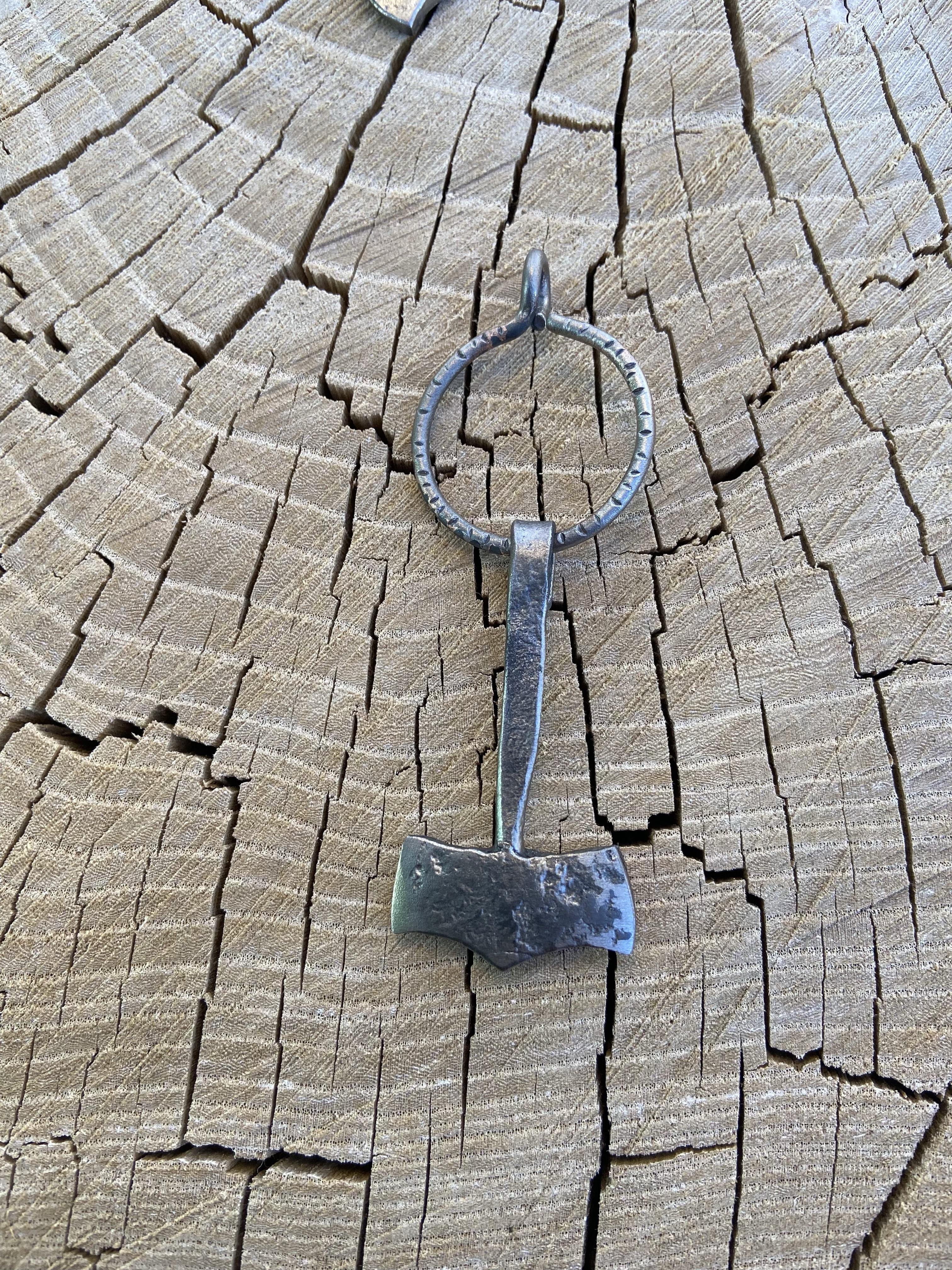



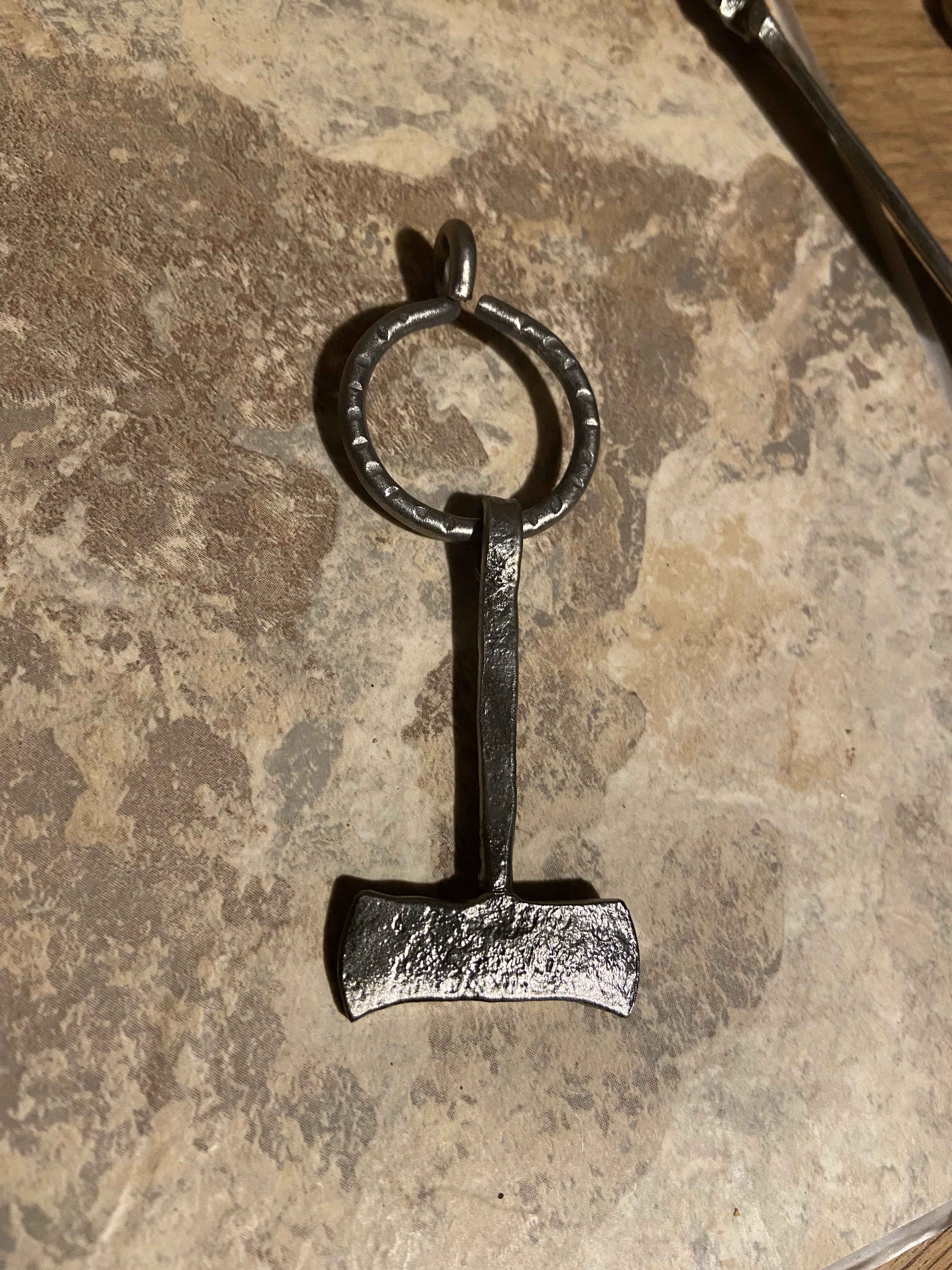
Hroð-
Etsy back up.
https://www.etsy.com/shop/NorseWest
After forever the forge is back in action. Trying to find a trip to Denmark/Germany. no customs just what is on here is available for now. Not back to knives yet. Hammer arm is a bit rusty yet.

Skål.
Hröð-
Jul

My Jul Will be between 12/21 and 1/18 so Glædelig Jul again & godt nytår.
Frohe Weihnachten und ein glückliches Neues Jahr.
Hröð-
Who Are The Corded Ware People (Updated)
Today we will discuss the Corded Ware Culture and the people associated with it culturally .

The Corded Ware culture is the western expression of the ancient Yamna or Yamnaya Culture of the Pontic/Caspian Steppes and possibly has components of West Central European Neolithic elements (David Anthony). Sintashta are the eastern expression of the Corded Ware and may represent what we today call Schythians, a mysterious Indo European tribe who seem to absorb or represent more than one later group. Genetically we see them connected with Gothic peoples, Slavs, Celts and some Uralic speakers as their empire stretched well across Eurasia. The Yamnaya people or maybe more accurately Proto Indo Europeans, theoretically appear to be the admixture of Caucasus Hunter Gatherers and Eastern Hunter Gatherers. R1B-R1A and G2A YDNA. The Neolithic farming communities of the Balkans and eventually all of Europe were descended from these Caucasus Hunter Gatherers as well (G2A). They had spread from the Caucasus into Anatolia and then to Europe. The Western Hunter Gatherer’s haplogroup ancestor (IJK) more than likely originated in the Caucasus or Iran. The I group then within Europe separated from IJK. R1B existed in Mesolithic Europe but rarely and did not see great expansion until the Corded Ware and Bell Beaker Complex. One of the Ancestral components of the Eastern Hunter Gatherer is the “Ancient North Eurasian” who is a common ancestor of Indo Europeans via the EHG and Siberian, Native American peoples via those who migrated to the Americas from East of the Urals. The Haplogroups U and H in MTDNA phylogenetic tree are children of the parent haplogroup MTDNA R. These represent a great deal of female European ancestry along with K, T and many others. The G haplogroup is technically a lesser branch of IJK from which the I, J and K YDNA groups are derived.









(Above) Yamnaya Culture related materials.
I DO NOT OWN THESE IMAGES , NORE DO I CLAIM ANY CREDIT TO THEIR CREATION. COPYRIGHT TO THE ORIGINAL CREATOR. MOST WERE TAKEN FROM WIKIPEDIA OR GOOGLE IMAGES.









(Above) Corded Ware associated artifacts.
I DO NOT OWN THESE IMAGES , NORE DO I CLAIM ANY CREDIT TO THEIR CREATION. COPYRIGHT TO THE ORIGINAL CREATOR. MOST WERE TAKEN FROM WIKIPEDIA OR GOOGLE IMAGES.
The move from the Steppes to Central, Western and Northern Europe:

I DO NOT OWN THIS IMAGE: Source Google Search.
The people of Eurasia were largely Hunter Gatherers up till the Neolithic when groups in the Caucasus, Balkans and Anatolia began to develop and spread new farming technologies northward into Central Europe. In certain areas hunter forager cultures persisted such as in
Scandinavia and parts of the Urals and Western Steppe. Eventually Europe was overtaken by the new technologies and hunting centered life decreased but remained at least in some form as a guarantee against bad yields. The Farming groups represented by Varna, Vinca , LBK and others brought the Megalithic structures to western Europe and Scandinavia. It should be noted that signs of indigenous farming may have been detected before the arrival of Caucasian groups. These farming groups are believed to have been the evolution of the Caucasus Hunter Gatherer (CHG) a distinct group who’s G2A Haplogroup was the primary YDNA of the farming expansion while H in various forms and others were the MTDNA. The H groups also may have had some European distribution in the Mesolithic as well. The Northern contemporaries of the CHG were the Eastern Hunter Gatherer (EHG) centered in modern Russia, The Urals, Scandinavia and Finland. These Hunters were partly descended from the “North Asian Hunter Gatherer” and are the ancestral originators of the R YDNA group (R, R1B,R1A). It is suggested among other theories that the remaining CHG and EHG combined into a new culture and genetic group ancestral to the Yamnaya culture centered in Pontic Caspian steppes north of the Black Sea and Caucasus. This new culture with a complicated language began expanding in the late Neolithic north, South, East and West. The new culture was marked by changes in ideology, travel and customs demarcating them as different or novel from the previous farming and hunting cultures and separated from them by many generations. In a large picture they are the descendant in part from Farming groups but many generations removed. The language spoken was likely Proto Indo-European, a grammatically complicated heavily declined language resistant to barrowing from other languages. This language carried cultural terms unique to it revolving around horse domestication, wheels and mobile economy. It is theorized that this group was the first to tame and ride horses (Horse, Wheel and Language , David Anthony) and create a mobile semi nomadic wheel based economy. The oldest wheel to date on Earth was found in Slovenia at 5350 years old. This would place the wheel in the heartland of Neolithic European farming culture and at the edge of Expanding Steppe Cultures (PIE/WSH). It is also suggested (Theorized) that the Chariot was invented in the Steppes by PIE cultures and spread south via the Caucasus to the Middle and Near East. Archeology and linguistics supports this (David Anthony ). The remnants of words relating to these things are found throughout many ancient branches of PIE. The exact age of the branching is unknown, In David Anthony’s book he points out that Germanic/Baltic/Slavic might be the oldest branching after Anatolian and Tocharian . Also pointed out in David Anthony’s book the PIE language share deep relationships with Uralic language groups via very archaic shared pronouns and other features. In his book he relates the possibility of a shared Ancestor that by PIE and Uralic families descended from. Given the geography I think this is an interesting idea but these are now distinct language families and may have been related in only the most ancient sense. I would like to Add that the Basque language is sometimes referred to as a candidate for the only surviving Neolithic Language with no known membership in existing language families, however recent studies have found similarities with modern Caucasus based languages and the Basque share a similarity with Neolithic populations in a similar way as Sardinians. These Neolithic peoples were originally from the Caucasus and carried the Caucasian G2A Haplogroup that is prevalent still in the Caucasus and Mediterranean populations.
NOTE:
When I speak of interrelatedness to these ancient cultures it is through a modern lens and in no way reflects their actual interactions or relationships nor implies they saw themselves as related to each other.
Why the Expansion took place and what spurred it is unknown but archeology tells us that signs of steppe influence began to be detected in Late Neolithic cultures at the fringe steppe areas, Carpathian Basin, Danube Valley and other places. This included technology, status symbols and burial customs. Signs of hostile force is also detected where WSH groups replace or run out previous Neolithic cultures as they move west into Europe. Signs of peaceful coexistence also exist. The Western and Scandinavian hunters appear to have been most durable to this and you see the Hunter YDNA (I,I2,I1) persist in Scandinavia and have resurgence during the post Bell Beaker Central European Bronze Age. This however was not the case in Britain as the PIE DNA both Autosomaly and YDNA replaces the previous population within several generations. Britain is heavily WSH derived while Scandinavia retains as high as 60% Hunter derived YDNA (I1A) but via autosomal is heavily WSH derived. After 3000BC The Corded ware and their descendants start to become the majority culture in Northern Europe. The story in Southern Europe Is markedly different in that the culture existing when WSH people arrived were much more diverse.
It is believed the Corded Ware culture might have been the group responsible for introducing PIE languages to Northern Europe and other ascribe it as specifically Ancestral to Germanic culture however the Corded Ware horizon appears to be Ancestral all Northern European cultures including Germanic, Celtic, Slavic and Baltic etc. *My view is that the interaction with unique indigenous groups played at least some role in post CWC groups evolving into unique cultures we see today:
WEST CENTRAL EUROPE: Mesolithic to Later Iron Age.
+> indicates shared origin.
* indicates an adjacent culture and genetic contact with PIE groups.
These charts are not exhaustive to every culture or group.
Western Hunter Gatherer*
Neolithic Farmer*
CWC Horizon+>
Bell Beaker Trade Complex+>
Unetice+>
Tumulus+>
Urnfield culture+>
Hallstatt Bronze Age/Iron Age+>
Le Tene Culture (Iron Age)+>
Pan Celtic civilization +>.
NORTHERN EUROPE: (Mesolithic to Iron Age)
Western, Eastern and Scandinavian Hunters *
Neolithic Farmers*
Funnelbeaker Culture (Hunter/Farmer mixed) *
CWC+>
Single Grave Culture+>
Beaker Culture+>
Unetice Culture+>
Nordic Bronze Age+> (Recognizable signs of Germanic Culture)
Jastorf and Wielbark Cultures (Iron Age)+>
Pan Germanic Cultures+>
BRITAIN: Mesolithic to Iron Age..
Hunter Gatherer (First Population) *
Neolithic Farmer (Second population) *
Bell Beaker Chalcolithic Warrior (Pie)+>
Bronze Age Briton (Descended from Beaker)+>
Le Tene Celtic culture+> (Arrives from NW Europe Iron Age)
British Celtic Tribes+>
EASTERN EUROPE:
Eastern Hunter and North Eurasian Hunter+> (Ancestor to Sredny-Stog-Yemnaya)
Western Hunters+>*
Caucasus Hunter+>*
Neolithic Farmers+> CHG* (Simplified term for many cultures)
Contemporary Forager Cultures *
Sredny Stog (Pre PIE? EHG-CHG) +>
Yamnaya (Pie) +> (EHG and CHG)
Corded Ware-Fatyanovo, Sintashta, Andronovo, Srubnaya Etc.+>
Únětice culture+>
Lusation Urnfield Culture +>
Schythians and Aryans (Non political meaning)+>
Pre Slavs?+>
This is just to give a bare idea of the influence of Steppe culture throughout Europe.
Tumulus and Urnfield cultures are mentioned as possibly Ancestral to Celtic culture which was later expressed by the Hallstatt Culture. Often Germanic and Celtic are placed close in the PIE family tree but recent opinions have linked Italic and Celtic as a western branch and Germanic, Baltic and Slavic as a Northern Branch. This being said it is not hard to see a general relatedness especially in the ancient form of each of these languages. Their exact correct placement is unknown as is their exact date of branching. Germanic may have branched as far back as 3500BC or as recently as the Nordic Bronze Age. Germanic customs have a certain amount of unique traits that may be remaining elements of the Pitted Ware Culture or other Scandinavian Hunting groups. As mentioned above Germanic populations are generally higher in Hunter and then Steppe ancestry while southern Europe is more farmer derived. Central Europe being the epicenter of WSH culture (PIE) has high relations rates to Yamnaya derived groups with less hunter and farmer. South Eastern Europe also has distribution WHG I2A. Neolithic female populations play a greater role in Northern Europe than male lineages as G2A is rare but I-M170 with its descendants and R1B/R1A are frequent. Germanic culture appears at least with current information to have been born out of the Hunter/Corded Ware and Single Grave/Bell Beaker group in Jutland or Southern Sweden. It then developed into the Nordic Bronze Age with at least some influence from Unetice and Hallstatt via trade and other contact. All of this of course is hypothetical postulating.
A further note:
In the ideas above I have simplified many elements and the info is not exhaustive. I also want to make sure that the Neolithic cultures are not under represented. The Funnelbeaker Neolithic culture was very widespread in Scandinavia and butted up to remaining Scandinavian hunters like the Pitted Ware culture. This same culture (Funnelbeaker) was also in Germany, Poland and Czechia when the Late Yamnaya arrived from Eastern Europe/Western Steppes. David Anthony proposes they arrived through the Danube Valley and that Corded Ware was a local construction that the Yamnaya made contact with and this grew into the wide spread Corded Ware culture that may have brought PIE languages to Northern Europe. They may have also carried not just PIE elements but remaining Neolithic elements as well. He also proposes the Beaker folk was a pre existing culture that Corded Ware made contact with but we know now via DNA that the Beaker Culture was descended from the same source population as Corded Ware and Yamnaya. In the Same section of his book it is put forth that the Ancestor of Germanic bifurcated from PIE in Eastern Europe which may be true but the actual language we know as Germanic I personally believe developed in Scandinavia nor central Europe during the Corded Ware/Single Grave period . On the subject of Bell Beaker I want to touch on my previous articles and after gaining further insight from the second time I read The Horse, Wheel and Language. The Bell Beaker designs appear to be either evolution from Corded Ware or Funnelbeaker/Corded/Protruding Foot Beaker designs or cruder copies of a Neolithic Iberian design. The Atlantic EBA was flourishing at this point and these could have been traded north from existing Neolithic crafters into arisen Yamnaya descended areas. We know via DNA the Beaker folk were not local to Western Europe but part of migratory Steppe peoples who likely Spoke PIE languages. It could be seen in a way that the Bell Beaker people (not pottery) were just the western most expression of Corded ware that picked up a new pottery style. Other Proto Indo Europeans groups earlier in development sometimes used pottery from surrounding areas. Sintashta and other CWC derived groups became unique eastern branches of CWC so why not a western most branch? The basic traditions of Corded Ware/Battle Axe/ Single Grave were intact in the Bell Beaker horizon. These traditions included single grave burials with goods like stone axes or hammers, copper daggers and Kurgans erected above the grave. The Beaker People represent the majority of British ancestors but are we to believe CWC just stopped at the coast and Beaker people had no connection?. We now have DNA to answer the question that yes The Beaker Folk were Corded Ware and that R1B was prevalent in CWC peoples. Some make them ancestral to Germanic, some to Celtic and Italic cultures. I would also like to add that I agree with the theory that Germanic, Baltic and Slavic belong in a branch together and Celtic and Italic belong in another branch around the Alps perhaps. If you look at word forms and etymology Celtic and Italic languages share some traits as well and mythology elements. If you look at certain words and mythology between Germanic, Baltic and Slavic languages certain elements are shared such as a female personification of the Sun, symbols, cosmology and animistic nature worship elements. A great deal of shared elements can be seen across Indo European religion and Germanic and Celtic people had considerable contact with each other but so did Germanic, Baltic and Slavic peoples. The contribution of the stone axe in the Corded Ware/Battle Axe cultures may have been pre-existing among the Funnelbeaker and other Indigenous groups. The Neolithic cultures of Europe, although likely distributed via Female lineages should not be underestimated either. It is recorded that males in the LBK culture of Central Europe’s Neolithic were buried with Stone axes. These males made little impact genetically but their women and traditions may have.
I hope this inspired you to dive into European Anthropology. Please go read and make up your own mind. I am only an amateur but find it endlessly fascinating.
Books and resources:
The Horse, The Wheel and Language by David Anthony (Highly detailed)
Skelhøj by Madz Kähler and Marrianne Rasmussen (Very Technical)
Bronze Age Metal Work by Nørgaard (Very Technical)
The Mound People by Glob
The Bog People By Glob
Myths and symbols in Pagan Europe by H.R Ellis Davidson (Early Celt and Germanic religion)
Eupedia.com (Great Maps and info on DNA)
Wikipedia.com (with a grain of salt/check other sources)
Wiktionary.com (etymology and tables)
Youtube.com (Good Documentaries)
Happy researching!!
Hroð-
Gruß Vom Krampus (belated)

Krampusnacht
Hroð-
Ancient DNA
Today we are going to talk in detail about how to relate to your ancient DNA results. Sometimes it can be difficult to determine exactly what the results mean and how they relate to your modern DNA make up. I will give a few examples using typical terminology.
Using my DNA I will give an idea of the break down and how to gain further insight to which ancient groups you relate to.
on “My True Ancestry” they use a simple concept, take your DNA mathematical numbers and apply them to a database of old archeological DNA samples. After you upload you access to several diagnostic tools like Deep Dive (actual relatives), Sample matches and haplogroup diagnostic breakdowns of your sample matches and deep dive.
My DNA breaks down this way: YDNA Haplogroups:
Samples matching with Indo-European/Steppe/Ural related Haplogroups (Late Neolithic/Chalcolithic/Bronze Age, Iron age through modern) 76.27%
Hunter derived samples indigenous to Europe (Paleo/Meso/Neo) 21.89%
Farmer matching samples (Neolithic) 1.75%
Lets take an even deeper look: If you take a look at my DNA thumbprint you see the entire timeline of matching samples and their exact distance (Small numbers are better) so take a Neolithic mixed Hunter/Farmer sample from England (4700 years ago). Compared to other users I match this sample at 98% but on the timeline the distance is 53. Take a pure Mesolithic Hunter sample from England (9000 years ago) my distance 19 and a compared user match of 90%. More than halfway closer in genetic distance. Now we take a sample from Neolithic Sweden (4900 years) who is Hunter/Corded ware mixed (Indigenous and Indo European) from the battle axe culture. Distance 4. 98% user match. This gives us an idea of what ancestry became dominant at the Bronze age, especially in people Ancestral to Germanic culture. It is a Corded Ware/Hunter break down with I1 hunter lineages, female hunter, Indo-European, Neolithic Caucasus lineages (U,H,K,T etc) and male Indo European/Scythian Kurgan lineages (R1A/R1B).
lets have a look at Some Bronze Age/Iron Age Indo-European samples:
Czechia Bell Beaker: Distance 4. Match 100%
England Bell Beaker: Distance 4. Match 100%
Bohemia Corded Ware: Distance 5. Match 100%
Corded Ware Alps: Distance 5. Match 100%
Scythian Ukraine Steppe: Distance 6. Match 100% (Early Iron Age/600BC)
Corded Ware Bohemia: Distance 5. Match Data Unknown.
Danish Viking Sample: Distance 3. Match comparison 100%.
My Top Samples per era:
Neolithic/Chalcolithic : Corded/Bell Czechia and Battle Axe Sweden.
Early Bronze Age: Bell Beaker England and CWC Bohemia
Late Bronze Age: Britain and Hungary (BEAKER/CWC/Schythian)
Iron Age: Scythian Ukraine and Iron France (Germano Celtic tribes DNA).
Roman Age: British Celt and Alemannic German.
Dark Ages: Scandinavian derived Lombard and Anglo Saxon.
Medieval Period: All 10 top samples are Denmark, Sweden and Greenland.
Top Early Modern: Gotland, Latvia, Iceland.
Top all time Matching Sample in distance: Danish Viking Distance 3. Match comparison 100%.
Number of Deep dive (Actual relatives) Samples per region:
45 Scandinavia.
31 Britain.
37 Germany, Central Europe/Eastern Europe.
………………………………………….
MY general matching samples per region:
Viking Denmark: 16
Viking Sweden: 20
Norway/Iceland/Greenland, Faroe: 15
Anglo Saxon and Viking England: 11
Scandinavian/Nordic total matching samples: 61
………………………………….
Germania minor and major (Germany, France, Netherlands, Switzerland): 44
Czechia/Poland and Urals/European Steppe regions: 71
Western to Eastern Europe total matching samples: 115
………………………………………………….
British Isles: 51
Total matching British Isles Samples: 51
……………………………………………………..
All Sample numbers above include all matching samples from all eras based on Geographic location*
Closest Matching Groups to my DNA by distance 15000BCE-3600BCE:
Funnelbeaker Czechia.
Western Hunter Gatherer.
Hunter Farmer Mix: Britain.
Most closely related Ancient groups to my DNA by distance 3600BCE-600BCE:
Czechia: Bell Beaker.
Czechia: Corded Ware Culture.
Swedish: Battle Axe Culture.
Alps: Corded Ware Culture.
Únětice Culture (Possibly ancestor to or influenced Slavic/Baltic/Germanic)
Bell Beaker: Germany.
Bell Beaker: Britain.
Schythian: Ukraine,Hungary, Moldova, Pontic Steppes.
Fatyanovo Russia (Proto Baltic)
Most closely matching groups to my DNA by distance 600BCE-110AD:
Schythian Kurgan Culture: Hungary, Ukraine.
British and Gaulish Celtic Tribes.
Most closely matching groups to my DNA by distance 110AD-600AD:
Germany and Eastern Europe Tribes: Goth, Saxon, Lombard, Rugii, Frank, Alemannic.
Celtic Britain.
Most closely matching groups to my DNA by distance 600AD-1200AD
Top Match: Viking Age Denmark-Viking Age Sweden.
Viking Age Greenland.
Viking Age Iceland.
Anglo Saxon England.
Most closely matching groups to my DNA by distance 1200AD-1700AD:
Denmark.
Sweden.
Most closely matching groups to my DNA by distance 1700AD-2019AD:
Denmark.
Sweden.
……………………………,,,,,,,,,,,,,,,,,,,,,,,,,,,,,,,,,,,,,,,,,,,,,,,,,,,,,,,,,,,,,,,,,
The above info was gleaned from MYTRUEANCESTRY.com Diagnostics.
Gedmatch info/breakdown:
MY DNA VS. Using oracle population search with Poland as substring MDLP Project K11 modern. Corded Ware Proto Unetice culture:
Top 3 results:
Alberstedt_LN (Corded Ware/Bell Beaker transitional burial site) Germany.
Halberstadt_LBA (Urnfield and Lusation (Urnfield burial tradition) possibly related to Early Baltic or Slavic cultures) Germany/Poland.
Bell Beaker Germany.
The above cultures are associated with the Yamnaya-Corded Ware horizon and its evolution into the Single Grave cultures like Urnfield, Lusation, Tumulus, Unetice etc where it is seen that the various Indo European burial customs take hold.
MY DNA VS puntDNAL puntDNAL K12 Ancient Bell BeakerCzech RISE 569:
Top 3 results:
1 Unetice_EBA_I0117 (Bronze Age) Indo European.
2 Bell_Beaker_Germany_I1549 (Chalcolithic) Indo European.
3 Halberstadt_LBA_I0099 (Lusation/Early Urnfield) Indo European.
My DNA top 4 results (modern) from Gedmatch Eurogenes K13:
Sweden
Norway
Northern Germany
Denmark
Now for how we decipher the information above:
My DNA is basically at this point almost all Yamnaya derived, I have almost no Neolithic farmer male Ancestry (G2A) but measurable Neolthic Female lineages, and considerable Indo European (Yamnaya) Female and male lineages. My first male Ancestor’s bifurcated Haplogroup originated in either the meeting of the Hunter Farmer or mixed Hunter/Farmer and the Corded Ware. It is I1a which ultimately derived from the oldest haplogroup in Northern Europe (I branch) but its mutation is dated almost exactly at the arrival of the Corded Ware. This Haplo group expanded and became dominant in the Nordic Bronze Age where in Scandinavia the Hunter lineages persisted but took on PIE women from the western steppes. My highest haplogroup lineage based on samples is R (R1B-R1A) Followed by I (I2-I1). Later in Northern Europe R lineages became competition for I lineages but never fully won out in Scandinavia. My First male Ancestor is Battle Axe Sweden or in more Ancient terms essentially Paleo European. (I has existed in Europe since Humans have existed in Europe). My Female MTDNA is Neolithic British and matches a specific North Atlantic mutation. It is a branch of H likely resulting from the meeting of Farmers and Hunters in Britain. Its parent origin is something like 27000 years ago in the North Caucasus overlooking the Steppes. My highest MTDNA Haplogroups are H in several variations (Indo and Farmer lineages) T and U5 (Paleo/Meso Hunter Females from Finland/North Eastern Europe). One Way to Look at it is my Haplo Lineage is Indigenous European (First two groups to settle) and My Autosomal (Actual genetic make up) is Indo European. So seeing all the Above Autosomal results in Ancient times you See places like Czechia and Poland or Germany rank fairly high and Also Britain but other than one very old Scandinavian Battle Axe Sample its all central European. My modern results however are Scandinavian?? well the answer to this can be discovered in the diagnostic tools on MYTRUEANCESTRY.COM. When you Take all of the above samples into detailed view they match more the modern population of current Nordic countries. These central Corded Ware groups migrated out of north central Europe into Denmark and Scandinavia around 3500BCE and then subsequent populations like the Bell Beaker who were likely a subset of the Danish Single Grave Culture expanded again into Scandinavia reinforcing the Yamnaya or Western Steppe Herder DNA in Scandinavia and creating the Nordic Bronze age which shared genetic and tradition similarities with Britain and Central Europe. It then evolved into a unique culture we see expressed in the weapons, art, horns and shields. Although in places like Sweden the I lineages remained dominant the Autosomal became largely PIE derived. This should be side barred with the knowledge that Germanic people have higher Hunter ancestry than other parts of Europe. This is likely what caused Germanic culture to be different to say Celtic culture (which is still very close) to but took new and different expressions. Mythological elements may refer to elder indigenous Hunter Gods/Goddesses and small archaic remnants of language as well. As described in David Anthony’s Horse/Wheel and Language such contact between Yamnaya folk and the remaining hunter/farmer people could not have resulted in 0 borrowing or loan words. The PIE people were notoriously resistant to borrowing words and anywhere they went they almost uniformly replace the original inhabitants through absorption. It is likely some of the Animistic and Shamanic ideas were from the Hunters and some seasonal ideas maybe inherited from the farmers as well as a glut of technology from the farmers who represented the most advanced civilization in Europe (Think Vinca and other cultures). The farmers also likely introduced the longhouse to Northern Europe as opposed to the hunters huts and other dwelling types.
A geographical look at my DNA:
My Paternal Haplogroup and the common ancient maternal group associated with I Haplogroup: I1A and U5:


My Maternal Haplogroup: H.
The exact origin of H and all of its subclades in unknown and its age is estimated at 27,000 years. My specific subclade is found almost exclusively in Germanic and Celtic Europe but its age is unknown. The H subclades were associated both the Neolithic expansion from the Caucasus and Balkans (Farming) but some clades also may have already existed in Mesolithic Europe. The arrival of the Indo Europeans with R1A and R1B YDNA brought additional H clades into Europe. I do not know if my lineage began in Britain or Scandinavia in the Mesolithic, Neolithic or Bronze age but as far as living people with the clade it is found in Ireland, Scotland, England, Sweden, Denmark, Germany and Switzerland. It is most associated with Ireland and Western Scandinavia. The H lineage is extremely diverse and European MTDNA is far less homogeneous than the YDNA. All this being said my mothers great grandmother was reportedly from Ireland but had an Anglo Saxon name. I imagine the Subclade arose between the Neolithic Stone builders and the chalcolithic Beaker Kurgan builders in Ireland or Britain and might have been spread around in the Viking age. The total origin of H could be between the Balkans and the Caucasus 27,000-33,000 years ago.
The Final Breakdown:
The Above information is how I have interpreted my Ancient DNA using two different diagnostic sites, but yielded similar results. If you are using these sites you can glean a great deal of information but you must compare data side by side. Once you have seen a wide variety of data you can create an aggregate to answer your questions about Ancient DNA.
Tribal associations:
Goths
Danes
Vendel Swedes
Suevi
Anglo Saxon and Saxons
My aggregate: (Autosomal Closeness)
Primary Ancient DNA: Corded Ware-Battle Axe Culture.
Secondary Ancient DNA: Hunter Gatherer. (SHG, EHG,WHG)

HAPLOGROUP:
YDNA Scandinavia 12,000 to 4000 years ago> I1A. (Parent I (M-170) Paleolithic Europe 33,000 to 55,000 years ago). Most likely date of expansion is Nordic Bronze Age. It is theorized to have existed in Scandinavia as a minority subclade from the Mesolithic until the bronze age. My Subclade in modern era is associated with the movement of Vendel culture people into Western Europe and the Anglo Saxon tribes who existed in Scandinavia before migration.
MTDNA: Britain 2100 to 8200 years ago > H (Subclade) (Parent H Paleolithic Caucasus 27,000 to 33,000 years ago.) Given its distribution with Germanic and Celtic PIE culture it hypothetically could have been carried by the the Bell Beaker Single Grave Builders who represented a genetic majority in Early Bronze Age Europe and were the primary formative DNA of modern Britain and Ireland.

Thanks for having a look!
Hroð-
Anglo Saxon grammar ideas
Anglo Saxon grammatical ideas and dative in semi poetic use:
The AS language retains the archaic Indo-European function of cases and gender as well as complicated poetic grammar that uses cases to imply words that are not actually written. In modern Germanic language only German and Icelandic retain cases and gender in any heavy use. Swedish and Danish have Common and Neuter in modern use. Danish and Old English share sometimes a visually close vocabulary but many are false friends and mean something different. AS uses cases not word order to indicate grammar and is more free in word order. This does not mean it is totally free or random in word order.
(The genders are meaningless in function in AS and only serve as a complicated archaic hold over from Proto Germanic and act as another layer of things to memorize. My interpretation from “Robert E Diamond” Old English grammar/ reader).
The following is my own writing of what I have learned.
The dative:
“Hail to the Sun”
The sun is receiving the call so it is singular dative.
I am the one hailing so I am in nominative.
Hælu Þære Sunnan (hail the sun) “to” is implied when using the dative and technically so is “the” so you could write it “Hælu Sunnan” and “ to the” ís implied and would be understood as such. The ending “an” on the Goddess name Sunne denotes a weak declension of the feminine noun. “Þære” ís the feminine dative form of “the” the nominative (f) form of the is “Seo”. Male Form(n) “Se” which is close to PG and PIE sources.
To add a personal emphasis I could add “Ic”
“Ic Hælu Þære Sunnan”
“I hail the sun”
As you can see Ic is cognate to German Ich.
When using articles (words like “the”) the article must match the gender of the word and the articles case must match the case being used. Dative with dative etc…
Example: masculine:
Se (nom) Hund (nom)
“The Dog” the dog is the subject so it is nominative as is “the”
Se Hundas (Nom/Plural)
“The dogs” plural
Þæs Hundes bān (Genitive)
“The dog’s bone”
(Accusative uses the same word endings as nominative) but uses several different articles depending on gender such as “þone”. The ACC case is used to denote the object being given such as above “bān”. In the modern sentence “I gave the dog a treat” the “treat” is accusative the dog is singular dative. The accusative is also used to indicate movement of something in a sentence such as running, riding, charging etc..
The dative case has the most uses and is the most complicated.
Dative:
“To the Hall” as in a toast
Sæle (neut) (tó the hall) poetic
“To the halls” “ (of our forebears) plural toast
Sælum (neut) dative plural “ to the” ís implied.
Sæl is the origin of the Word Saloon and Salon. Modern Danish “Sal” as in Mjødsal (Mead hall) Old English “Medusæl”
All cases and genders have a version of the word “the” and some are shared. Cases have some of the following endings: ( not complete or exhaustive)
E
A
es
as
U
an
Some case endings on certain words have no end vowel or sometimes use a double from another such as sometimes genitive ending E or Nominative ending in A.
This level of complexity leaves the student with need of complex tables showing all gender forms, articles by case and gender as well as all singular and plural forms of words. Wiktionary and and a good word hoard book goes a long way.
Notes:
Anglo Saxon is a Norð Sea Germamic or Ingveonic language that originated in Jutland and Southern Scandinavia. Old English, English, Old Saxon, Low German, Old Frisian and Frisian are all within the Ingveonic family. Some speculate the Teutons were also Ingveonic due to their southern Scandinavian origin. These languages sit somewhere between Scandinavian and West Germanic languages.
I use Peter S. Baker, Robert E Diamond and Stephen Pollington, K Herbert resources as well Thijs Porck videos and wiktionary declension tables.
Skål 🍻 some of this might not correct but it’s as far as I have gotten.
Hroð-


